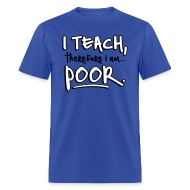Over Christmas break, I had a bit of an epiphany. Not THE Epiphany, January 6, when the Wise Men visited the newborn Jesus, and the day that you are supposed to take down your Christmas tree (though my mother-in-law leaves her tree up year round). But a teaching epiphany all the same.
I came up with a game plan in my head for a better way to teach the kids to solve word problems. Thankfully, I did have a week or so to implement it before all these crazy inclement weather days started piling up (we're on our FIFTH today). The kids are taking to it somewhat slowly, but when they do, I think it's really effective.
It's also one of those things that I'm kind of kicking myself in the butt for never having thought of before. I have a nagging feeling that many of you reading this will say, "And just why the heck haven't you been doing it this way ALWAYS?? Duh!!" Nevertheless, I'll attempt to explain.
In Dallas, we have a problem solving model that we have to use. It's called See-Plan-Do-Reflect, or SPDR. The kids make a giant plus sign, +, and each quadrant has its own purpose. Let me write a typical word problem, and I'll try to explain the old way first, and then the new way.
Timmy has $13.00. He bought 32 apples in 4 crates. Each crate had the same number of apples. How many apples were in each crate?
Step number 1 remains the same, and always will. READ the problem. I can't stand it when kids just see 13, 32, and 4 and add them all. So they have to read it through once first.
BEFORE, I would have them start at the very beginning and put every number they saw into the "See" box. They would wind up with something like this:
T -> $13.00
He bought 32 apples
There are 4 crates
How many apples were in each crate?
Then they draw the 4 operation signs off to the side and take a good look at the units in their box. If the units are the same (apples and apples) or the same TYPE of thing (dogs and cats, or boys and girls), they know they can only add or subtract and can eliminate the other two operations. If the units are different (apples and crates, or candy and bags), they can eliminate addition and subtraction.
In the "Plan" box, they would draw a picture. I've taught them to always circle the word "each" and to put a box around whatever unit comes after that word -- in this case, "crate." The box tells them what to draw. They need to draw 4 crates (they draw circles to keep it simple), and put the correct number of apples (tally marks) in each crate. If the sentence that said "each crate" already tells them the number of apples in each crate, they put that number or that many tally marks in each circle. If the question ASKS how many apples were in each crate, then they don't know the number yet, so they leave the circles empty and divide up the 32 tally marks.
In the "Do" box, they write the number sentence (32 / 4) and do any adding, subtracting, or any other operation they need to do.
Finally, in the "Reflect" box, they check their work by fact family if possible (ie, 8 X 4) and they write a sentence that answers the question. "There are 8 apples in each crate."
For some kids, this way has worked really well. For some kids, the "see" box takes forever because they are unsure how to decide if a number is important to the problem or not. So here's where I think my NEW way helps.
Same word problem. But now, after reading the problem, the very first thing I have the kids do is focus on the question. Instead of starting at the beginning, and putting all the numbers in the "see" box, they start at the question, and circle the unit that the question is asking them to count. This question starts with, "How many apples," so apples becomes the most important unit in the story.
As opposed to the old method, the kids now write the question first in the "see" box and then go back to the story to find instances that give a number with the target unit. In this problem, they would find 32 apples. Any sentences that also mention apples AND have the word "each" or "every" in them provide a brand new unit that is important. Since the question in this problem asked how many apples were in "each crate," crates are now important as well, so they need to add the 4 crates to the "see" box.
Their "see" box now looks like this:
How many apples are in each crate?
He bought 32 apples.
There are 4 crates.
The $13.00 never even comes into play because dollars are not asked for in the question, nor are they mentioned after "each" anywhere in the story.
The Plan, Do, and Reflect boxes remain pretty much the same as the old version, but the kids seem to have a much better grasp of how they are related now that they have keyed in on what the problem was really asking them to look for.
This is what caused me to have a long hard think about this and to have my "flux capacitor" moment in the first place. We had given a test where one of the questions talked about a kid having a bunch of books and wanting to make stacks. The question asked, "How many stacks can he make?" and a lot of the kids were writing answer sentences that said, "He can have 24 books," or "He can have 8 books in each stack." But the question asked for STACKS, not BOOKS!!
I am hoping that this new way will really help the kids focus on the unit in question, not just any unit in the story.
I am an Amazon.com Affiliate, and I warmly invite you to shop using my store!
Try Amazon Prime 30-Day Free Trial
Join HBO Free Trial
Try Amazon Prime 30-Day Free Trial
Join HBO Free Trial
Subscribe to:
Post Comments (Atom)











3 comments:
But will the "coaches" and micro-managers approve?
AJ
Great idea to start this with the little ones. It will start to develop the concept of "unknown."
I teach Algebra I, Algebra II, and AP Stats and I ALWAYS have the student start with the question. The question tells you the variables and once you hit a 3 or 4 variable word problem, you need to know define the variables before you do any other work!
Yeah, I want them focused on this so we can actually narrow DOWN the "unknown," instead of having EVERYTHING in the universe be unknown to them!!
Post a Comment